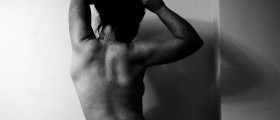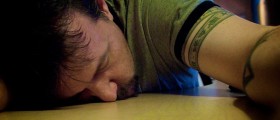
The back and spine are complexly constructed parts of the body and injuries or conditions affecting either can be serious. Many do suffer from problems concerning the back - four out of five adults experience lower back pain at least once. There are, however, many different ways through which one can avoid or alleviate back pain, including daily stretching, and this article will look to examine the different types of back pain that can be experienced and some techniques used to combat them.
Causes
Muscular strain is the most common cause of back pain. This will occur if one or more muscles are torn as a result of strenuous movement. Another type of strain is the ligamentous strain. This results from overstretching of the ligaments in the back and can often go hand in hand with muscular strain.
Narrowing of the spinal canal can occur with age and this can lead to a condition known as Spinal Stenosis. This condition can be exasperated by thickened ligaments along the spinal canal, bony spurs and arthritis and in addition to this, pain may be particularly bad while walking or exercising. A necessary treatment for this condition may involve surgery.
If the spinal nerves become too compressed or damaged, one may experience a herniated disc. This condition usually affects those who are exposed to repetitive abrasive motion. As a result of this condition, pain may be felt at the site of injury and along the nerve concerned.
Mainly affecting women, osteoporosis involves the loss of bone density and can make one especially prone to fractures or broken bones. Osteoporosis can be particularly detrimental to the spinal bones. Impacts as minor as those resulting even from sneezing can cause fractures.
Fibromyalgia, a rheumatic condition causing soft tissue pain, sleep disturbance and fatigue, is another potential problem that may affect the back.Stretching and other techniques
When stretching, one should not overextend the back and should look to keep movement and strain to a relative minimum. Significant pain means you are probably overstretching. Keep movement smooth and steady and ensure you stay well hydrated. Stretch both in the morning and before sleeping.
In general, one should avoid heavy lifting but if it is unavoidable, ensure you are using correct lifting techniques - use your leg muscles to take the strain of lifting, rather than the back muscles. Keep your back straight while doing so. If one is stationary at a desk for a long time each day, make sure to take plenty of breaks, keep your feet on the floor and if required, use specialist equipment to maintain good posture.














-Causes,-Symptoms,-Diagnosis,-Treatment_f_280x120.jpg)


Your thoughts on this
Loading...